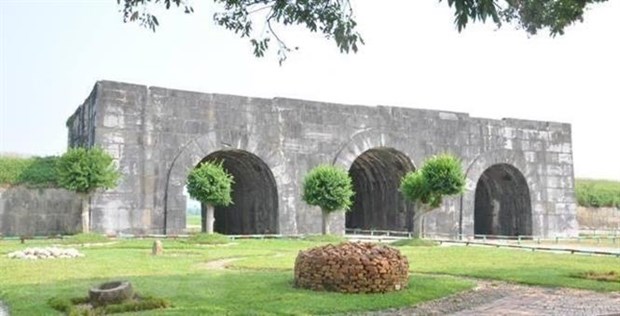
Ho Dynasty Citadel (Source: VNA)
New documents that help in understanding the architecture of the Ho Dynasty Citadel in the north-central province of Thanh Hoa were unearthed during a recent excavation, said Director of the Ho Citadel Heritage Conservation Centre Nguyen Ba Linh, reported VNA.
For the main palace and the eastern part of the citadel in different historical periods, the artifacts will serve study purposes and restoration projects at the relic site, affirming its major and exceptional value.
The large-scale excavation was carried out in two digs located in the central part of the citadel, spanning 8,000 sq m.
Four traces of architecture from the Ho Dynasty (1400-1407) were discovered, along with two others dating back to the Le Dynasty spanning the period from the 15th century to the 17th century.
Bricks decorated with flower patterns produced in the Ly Dynasty (1009-1226) and the Tran Dynasty (1226-1400) were also discovered, as were some created in the citadel and bearing ancient characters.
The artifacts enable scientists and archaeologists for the first time to clearly envisage the different architectural styles of the citadel.
Linh said that excavations in the recent past have been conducted in conjunction with Thanh Hoa province’s commitment to UNESCO and reaped fruitful results, proving the tremendous potential of underground relics at the citadel.
The Ho Citadel Heritage Conservation Centre will exert every effort in the conservation of exhibits and excavation digs, he added.
Built in 1397 under the Ho Dynasty as the capital of Dai Ngu, the citadel is unique for its outstanding construction technique which used large blocks of stone, weighing from 10 tonnes to 26 tonnes each, carefully shaped, interlocked and elevated to an altitude of about 10 meters.
The citadel served as a military stronghold to protect the country from invasion, thus becoming a symbol of patriotism and national pride, and a witness of Vietnamese history during the late 14th and early 15th century. For the past six centuries, however, the forces of nature took its toll on the site./.